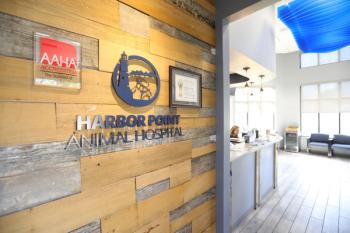
Vaccine debate leaves profession in dilemma AVMA, AAHA positions attempt to ease contention
Upper Montclair, N.J.- Dr. George Cameron knows canine distemper. He's witnessed rabies and parvovirus.
Upper Montclair, N.J.- Dr. George Cameron knows canine distemper. He's witnessed rabies and parvovirus.
So when this second-generation practitioner hears warnings of vaccineoverload, he scoffs: "I come from an era of having seen so much distemperand parvo, until I see otherwise that groups of animals shouldn't be vaccinatedannually, I'll continue doing what I'm doing. I don't see harm coming todogs from vaccinations, I see harm coming to dogs from not getting vaccinations."
Protocols like Cameron's are coming under attack as critics questionthe need for recurrent vaccines, associating annual inoculations with canceror autoimmune disease. To allay dissension, the American Veterinary MedicalAssociation (AVMA) promises to soon release a vaccine position statementand the American Animal Hospital Association (AAHA) anticipates canine vaccineguidelines. (See cover story.) But their direction doesn't offer clear-cutanswers as federal regulators license vaccines based on up to a year ofmanufacturer efficacy tests, leaving a product's long-term side effectsand duration of immunity largely unclear.
So in the manufacturer's absence, academics have stepped in, studyingeverything from immunization longevity to vaccine-associated sarcoma. Researchersclaim the profession vaccinates too often using too many biologics, whilevaccine supporters poke holes in their work. Their data, or lack of it,leaves veterinarians facing an ethical dilemma: practice outside the manufacturer'slabel, using personal judgment and limited research to determine risk, orbooster annually, exposing patients to alleged harmful side effects.
No one protocol
Suspicious of anti-vaccine "propaganda," Dr. Gary Norsworthy,a feline practitioner in San Antonio, Texas, says he'll booster annuallyuntil he sees "hard evidence" not to.
"I want to see more substantiation for these researchers' claims,"he says. "I agree with AVMA that there isn't enough data to know whatthe true duration of immunity is for the vaccines we use in dogs and cats,so I'm looking at my patients individually, doing risk assessments. I vaccinatewith what I feel is appropriate.
"I can do it the way I think it's right and my neighbor can do itthe way he thinks is right, and we may not agree."
Not quite a neighbor, New Yorker Dr. Mark Siebert considers yearly vaccinationsunethical. A practitioner for 10 years, it wasn't until Siebert opened hisown Manhattan clinic that he felt free to buck the norm. Now, in most cases,he vaccinates, boosters once and beyond that, relies on antibody titersto determine patient immunity levels. His clients, he says, are pleased.
"I don't know veterinarians around here who titer like this,"he says. "But when I explain to clients why I don't see the need tovaccinate yearly, they understand. Ninety percent of my clients accept immunitylevels as proof of protection."
Sarcoma spurs studies
Veterinarians like Siebert have questioned the overuse of vaccines andtheir side effects since their 1960s introduction to the profession. Butit wasn't until 1991, when DVMs began noticing a high rate of soft tissuefeline sarcoma developing at popular vaccination sites that the issue sparkeddebate. Cancer reports spurred studies and in 1996, veterinarians formedthe Vaccine-Associated Feline Sarcoma Task Force (VAFSTF), which has pumpedmoney into proving vaccine-malignancy correlations ever since. The researchremains under way.
"Unless you're living in a cave, there's no veterinarian who's notgoing to be concerned with at least the information on the feline sarcomaissues," says Dr. Benjamin Cassutto, a practitioner in Delaware. "Eventhough I would profit more, I do not recommend certain vaccines becauseI'm worried about overstressing the immune system. This means you have tomarket better so you don't lose clients or income."
Greedy motives?
And profits are what vaccine critics believe is at the root of the profession'sresistance to update its protocols. Without the lure of vaccines, clientsmight be less inclined to make yearly veterinary visits. Vaccines add upto 14 percent of the average practice's income, AAHA reports, and veterinariansstand to lose big, says Dr. Ron Schultz, a veterinary immunologist at theforefront of vaccine research and chair of the University of Wisconsin'sDepartment of Pathobiological Sciences.
"I suspect some are ignoring my work," says Schultz, who claimssome distemper vaccines last as long as 15 years. "Tying vaccinationsinto the annual visit became prominent in the 1980s and a way of practicingin the 1990s. Now veterinarians don't want to give it up."
Still, Cameron, who continues to vaccinate regularly, downplays talkof greed.
"But veterinarians are people who, after eight years in a university,come out with the lowest professional incomes," he says. "If itwere just money, we wouldn't be in this business."
Associations take position
To help DVMs make sense of the controversy, the American Associationof Feline Practitioners (AAFP) developed feline vaccine protocols basedon VAFSTF research.
Canine-specific protocols also are on the way, AAHA promises, estimatingtheir report's release by next spring. An AVMA position statement is scheduledfor publication in coming months.
For North Carolina State University Professor Dr. Richard Ford, who workedon both the AAHA and AVMA documents, industry guidance couldn't come soonenough. "What concerns me is the large number of vaccines coming intothe market, and the fact that there are veterinarians who insist on vaccinatingevery dog and every cat with every vaccine every year," Ford says."We cannot do this; it's too much.
"Are we vaccinating too often with too many vaccines? I'm afraidthe answer is yes."
Fact box
Income vaccinations represent in the practice
Practice Average
< $500,000 15.9%
> $1 million 2.3%
Total: 14.1%
Source: AAHA Financial & Productivity Pulsepoints, Second Edition
Newsletter
From exam room tips to practice management insights, get trusted veterinary news delivered straight to your inbox—subscribe to dvm360.




